Abstract
The increase of cell volume as a function of time was studied throughout the generation cycle in synchronous cultures of Chinese hamster cells using a Coulter aperture and a multichannel analyzer calibrated against known cell volumes. The experimental results were compared to a mathematical model of cell volume increase which considered the effect of the distribution of individual cell generation times on the progress of the population. Several modes of volume increase, including linear and exponential, were considered. The mean volume vs. time curve was rounded at the ends of the cycle even when linear growth was assumed. The experimental results show that cell volume increased in a smooth fashion as a function of time, with no discontinuities in rate detectable at periods when cells may have been undergoing metabolic shifts as, for example, through the phases associated with DNA synthesis, G1, S, G2. A statistical test on the comparison of the modal cell volume vs. time data to the predictions of linear and exponential growth models accepted both hypotheses within the resolution of these experiments. However, exponential growth was favored over linear growth in one cell line. Volume dispersion was almost constant with time in both sublines which is also consistent with exponential growth. Limitations of the electronic technique of volume measurement and indications for future experiments are discussed.
Full text
PDF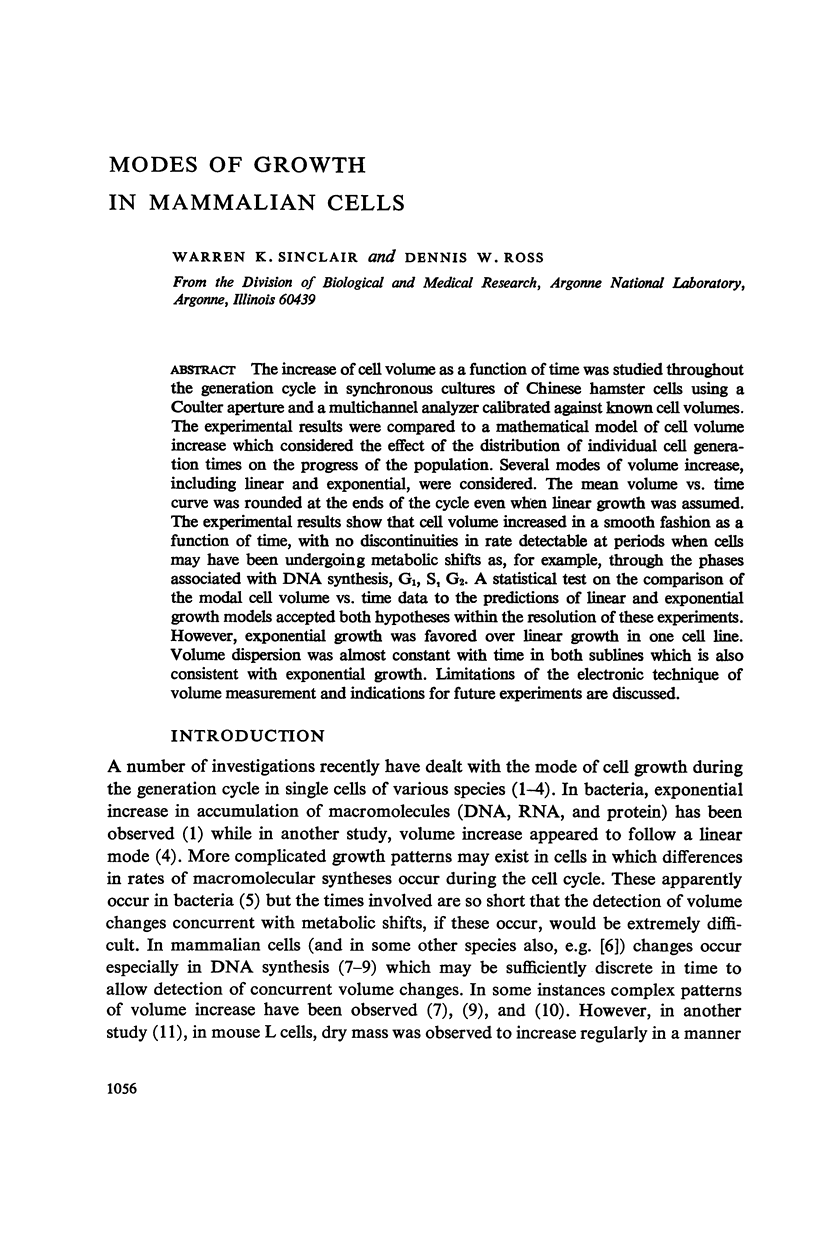
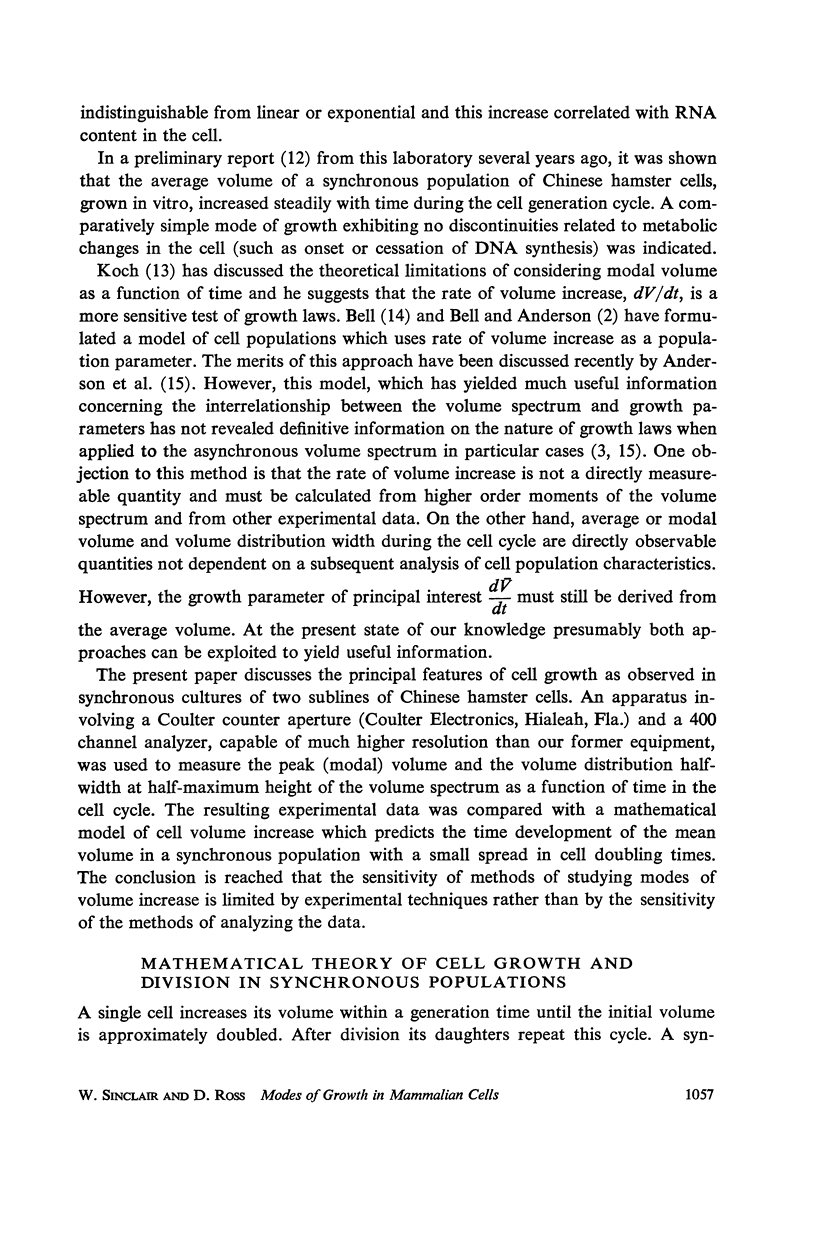
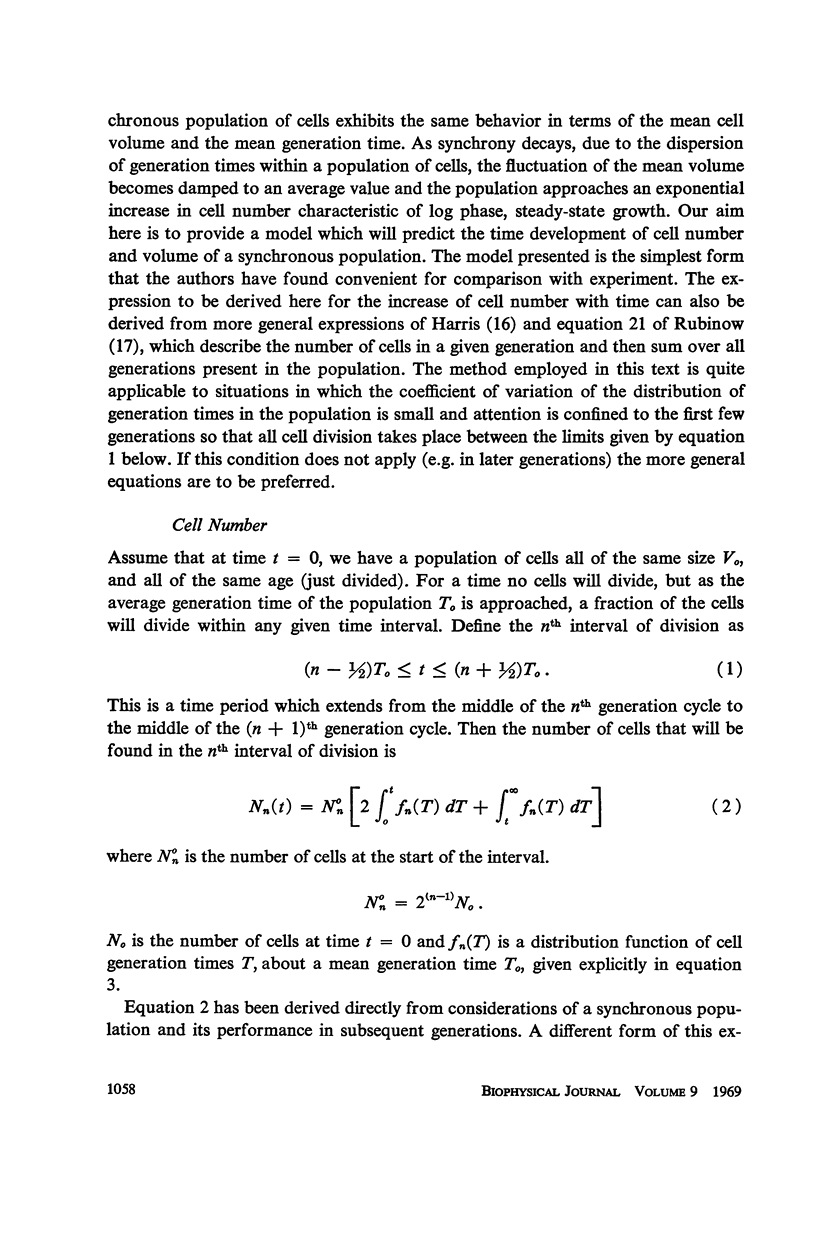
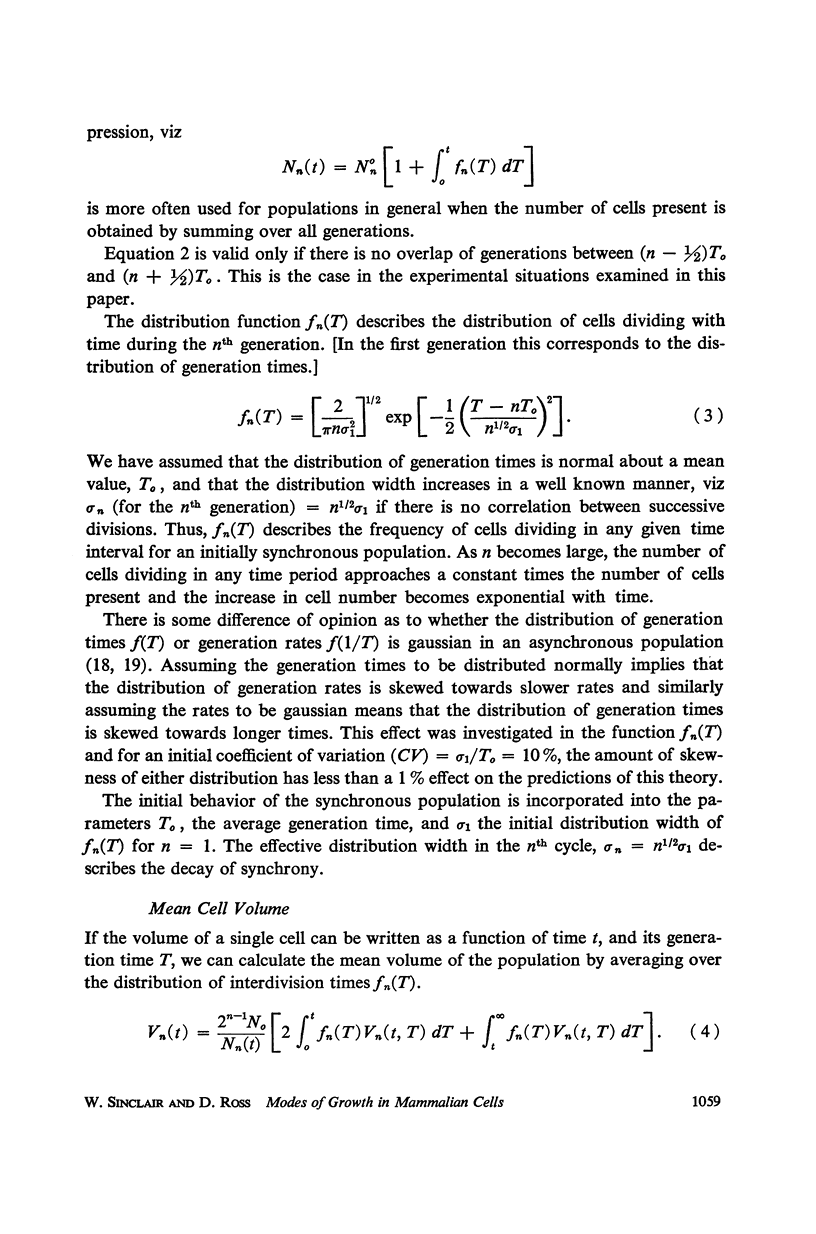
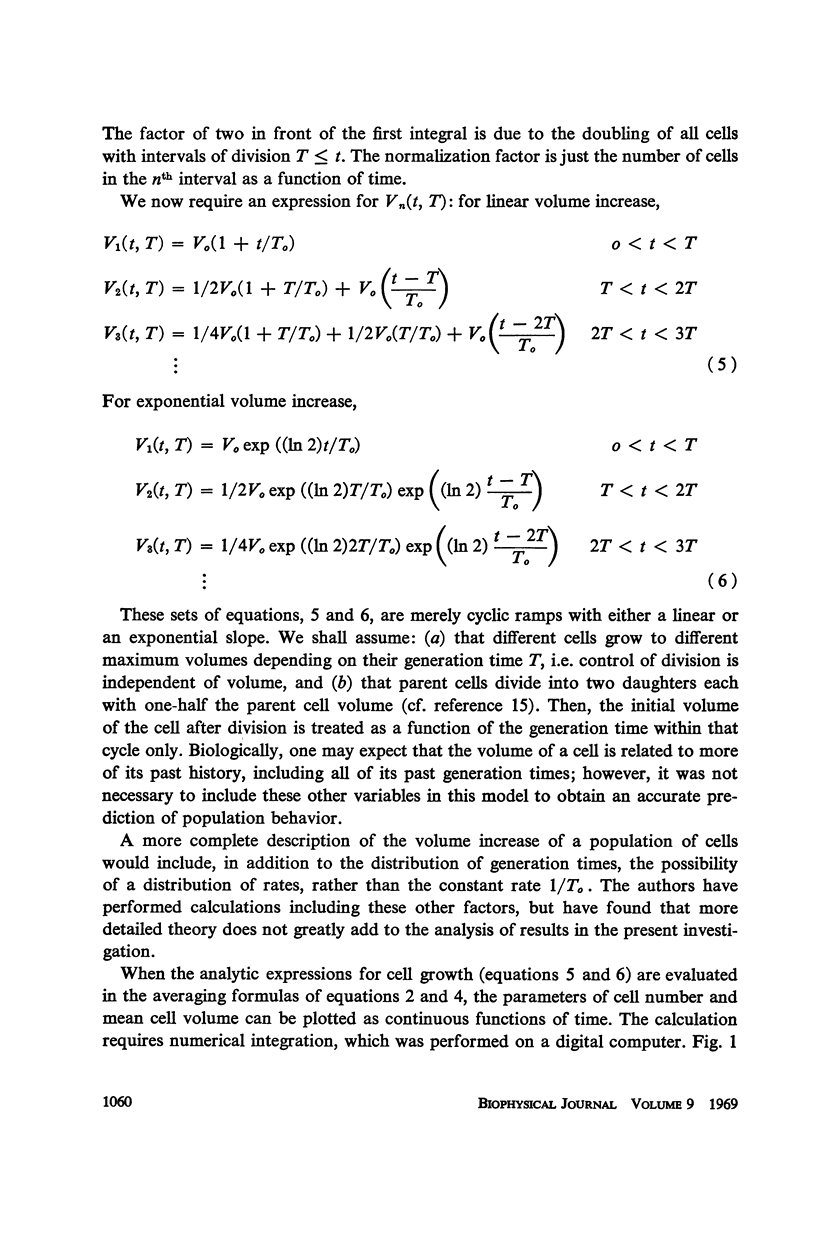
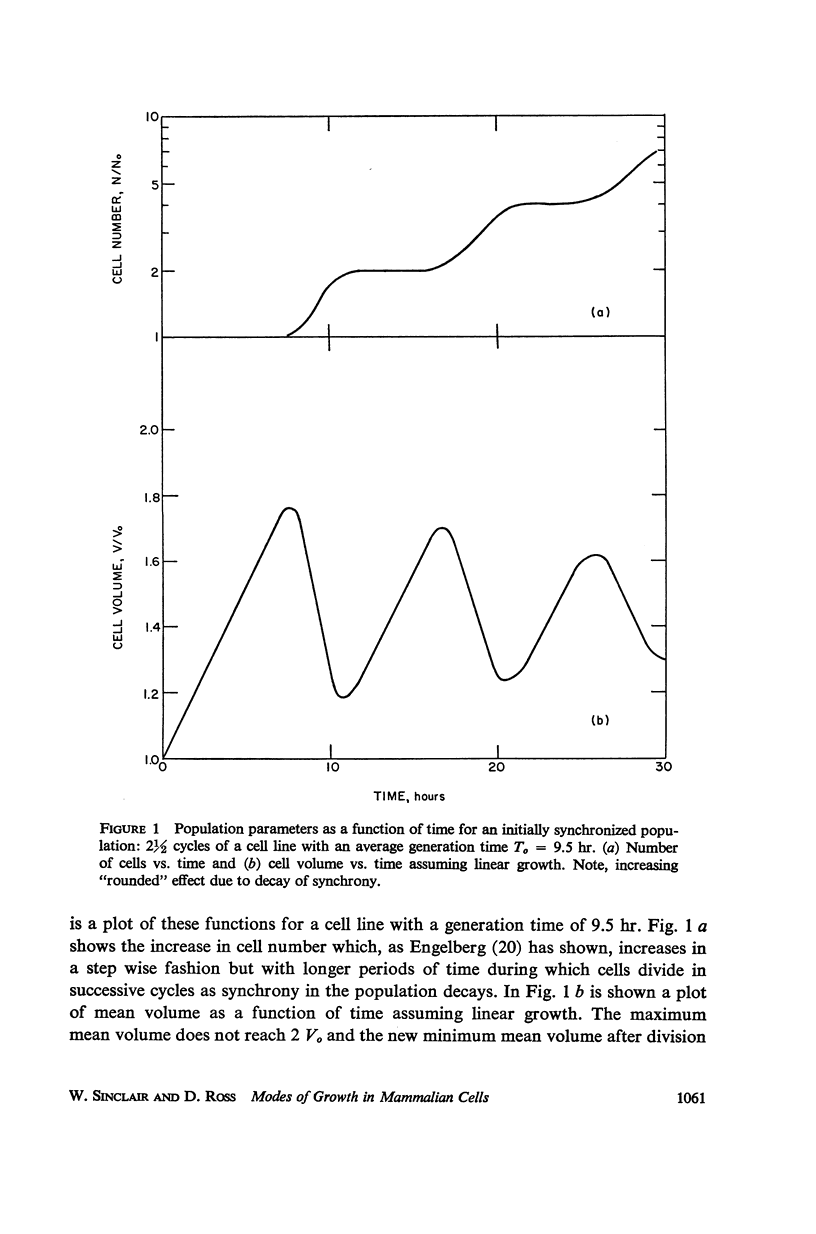
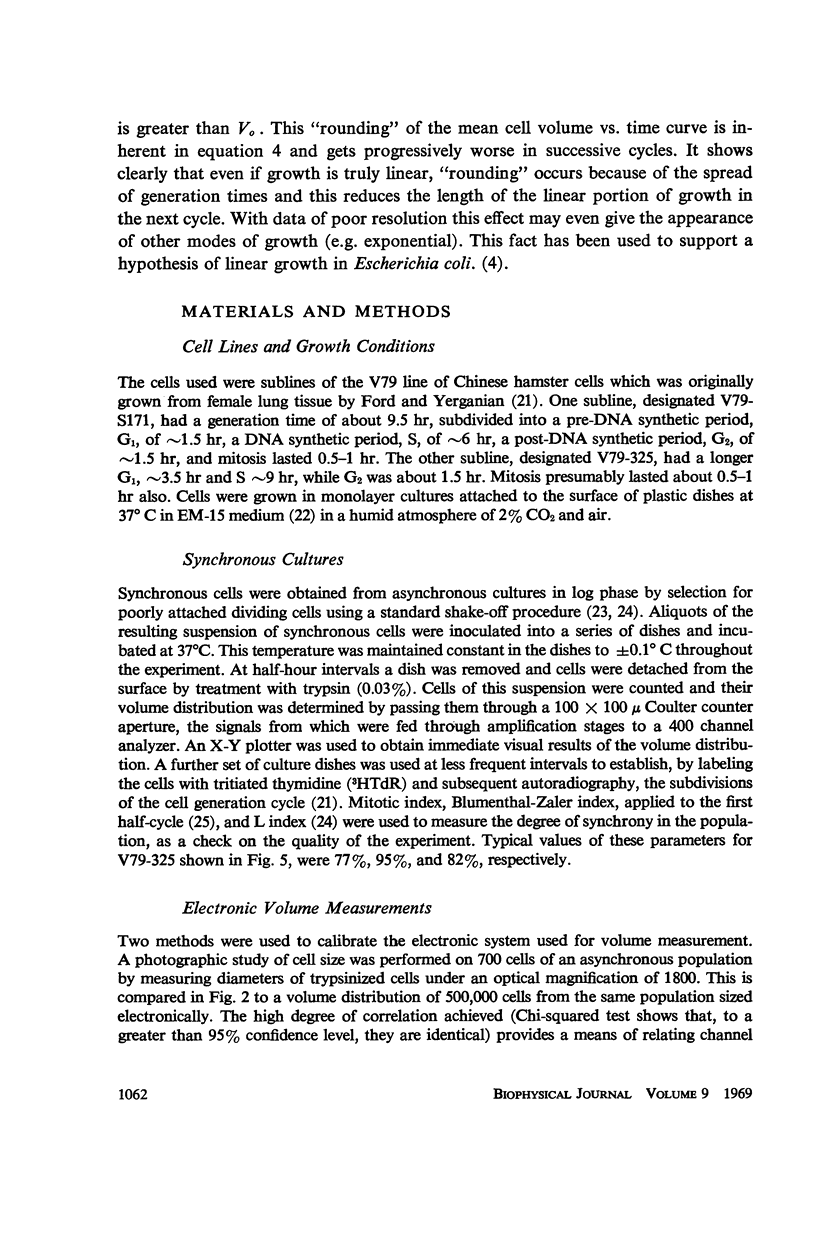
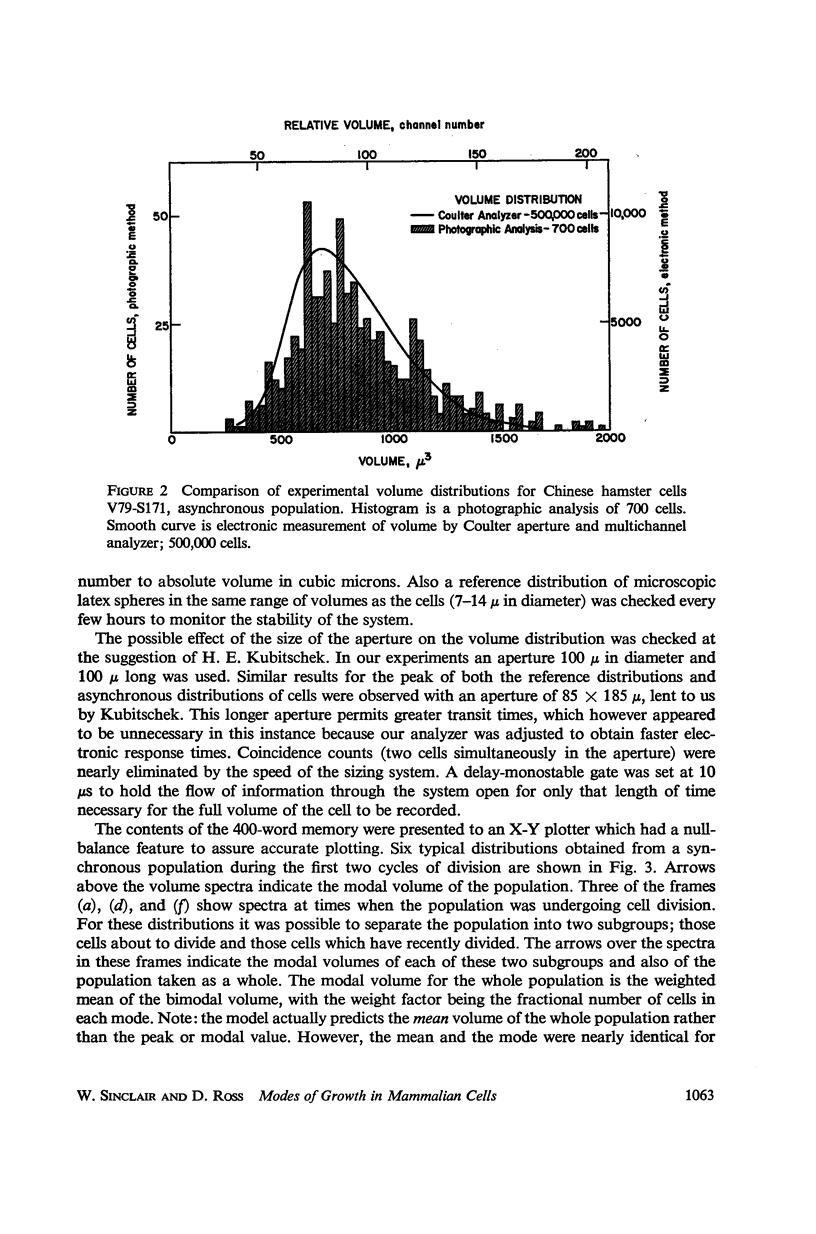
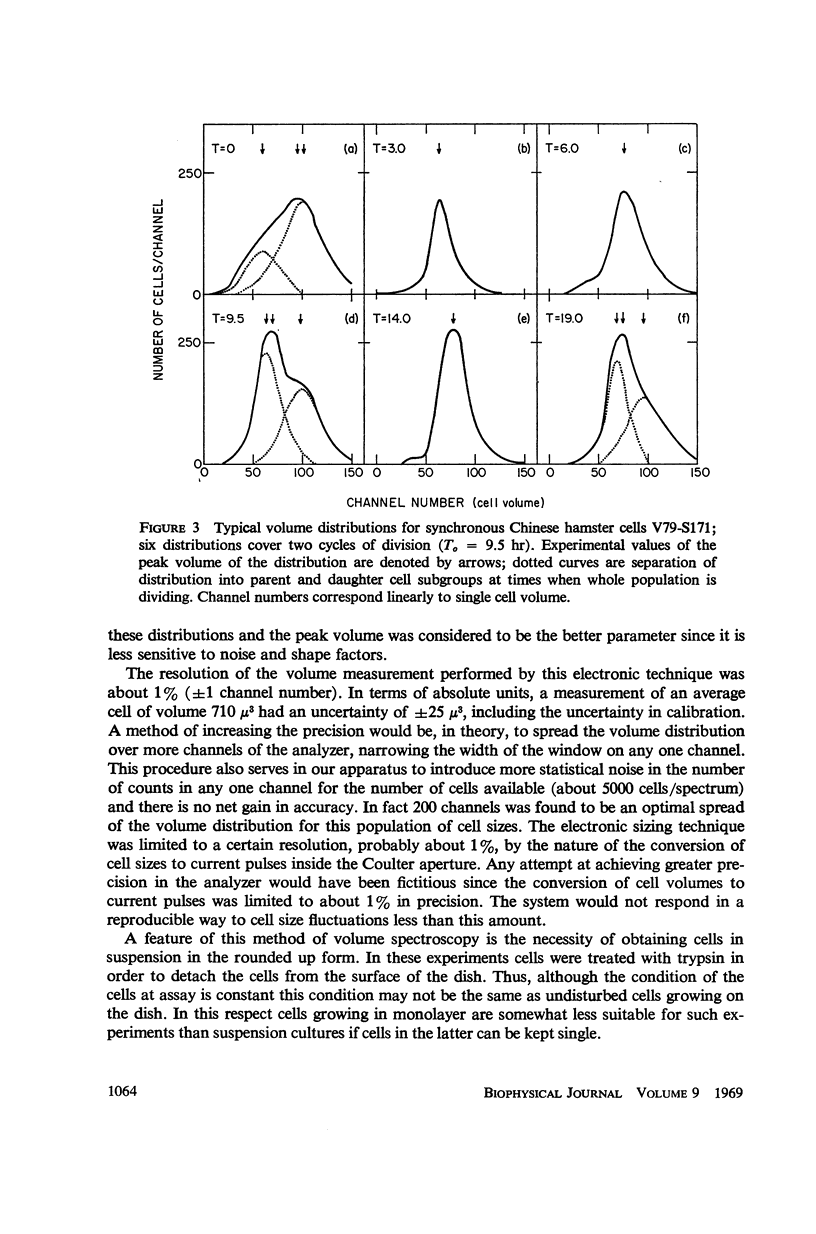
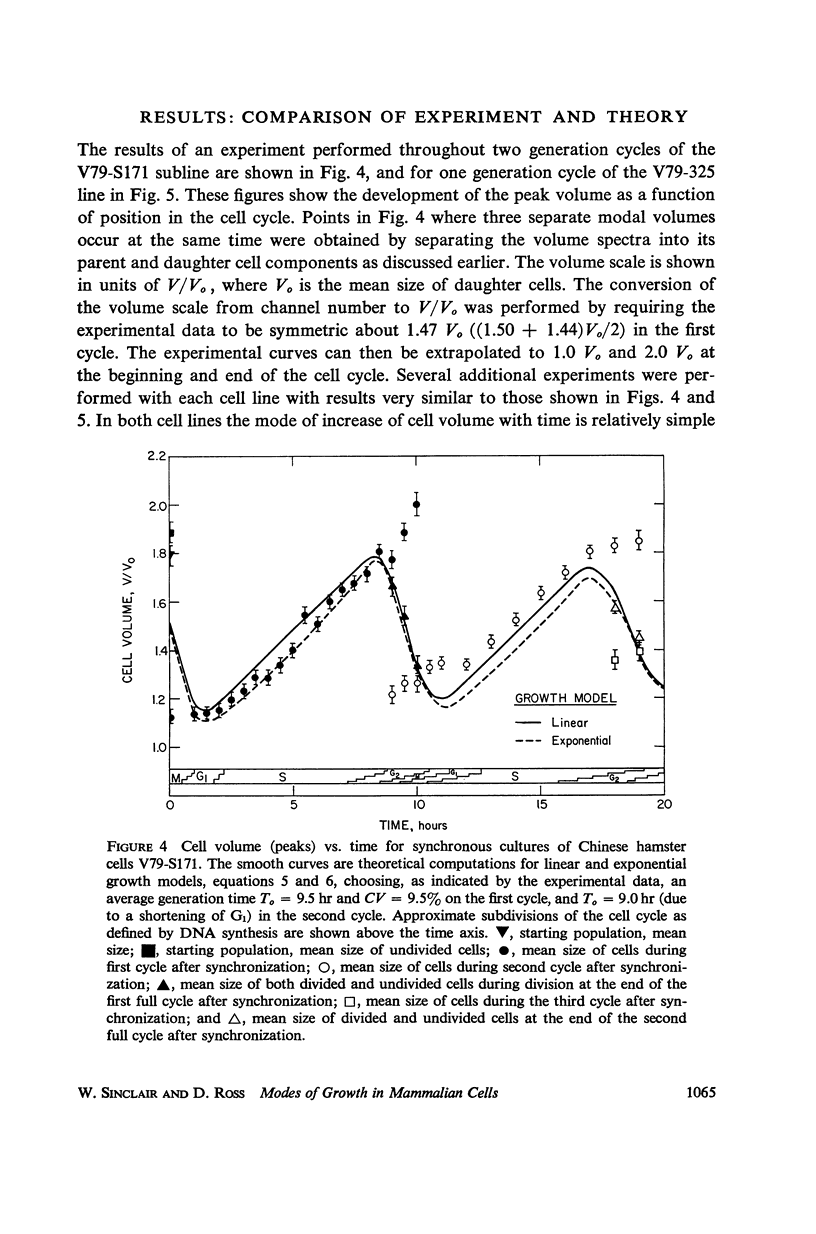
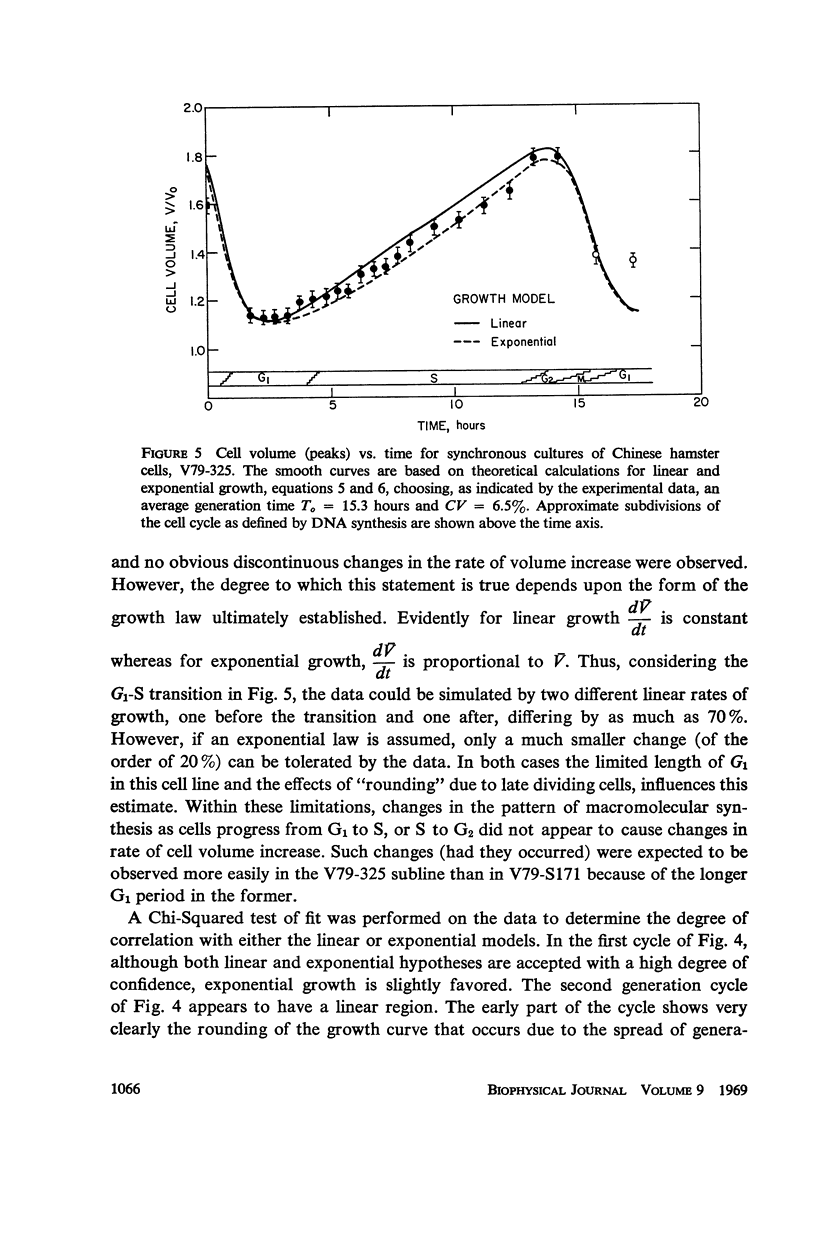
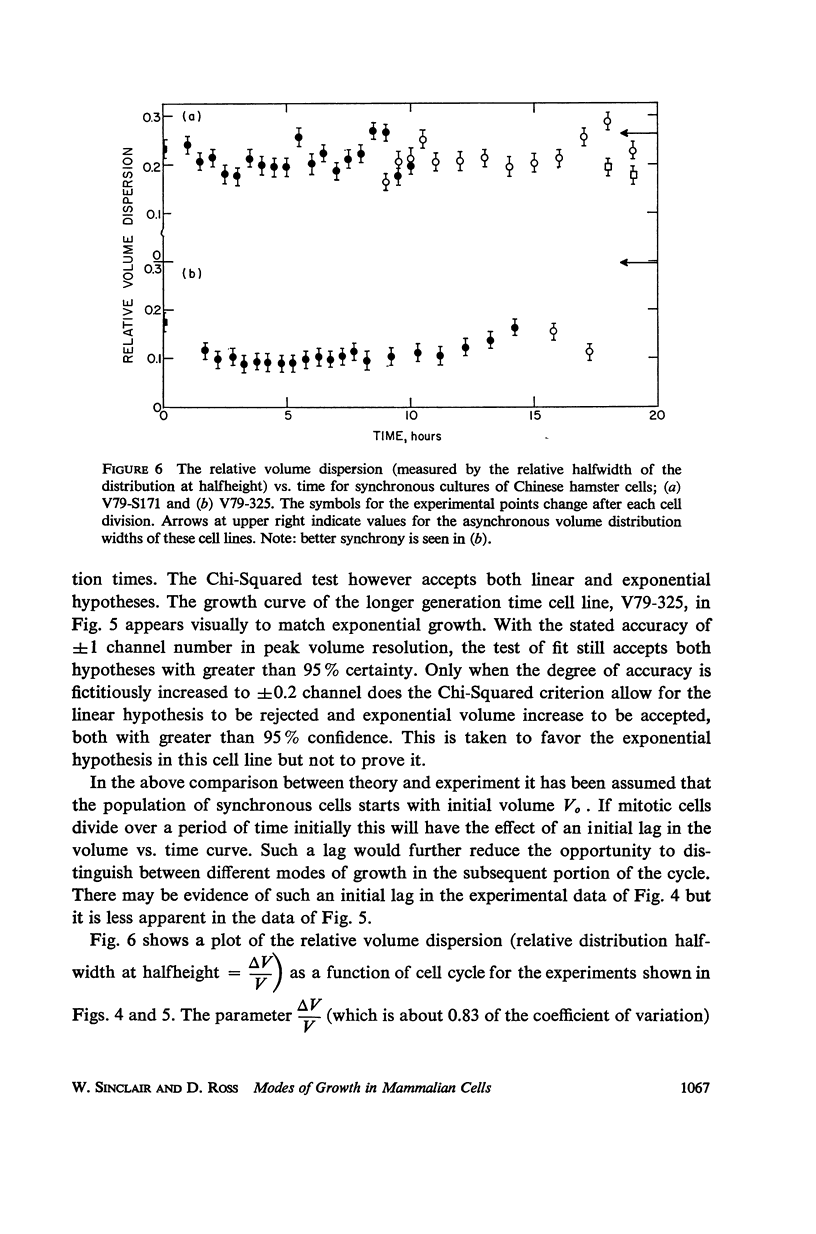
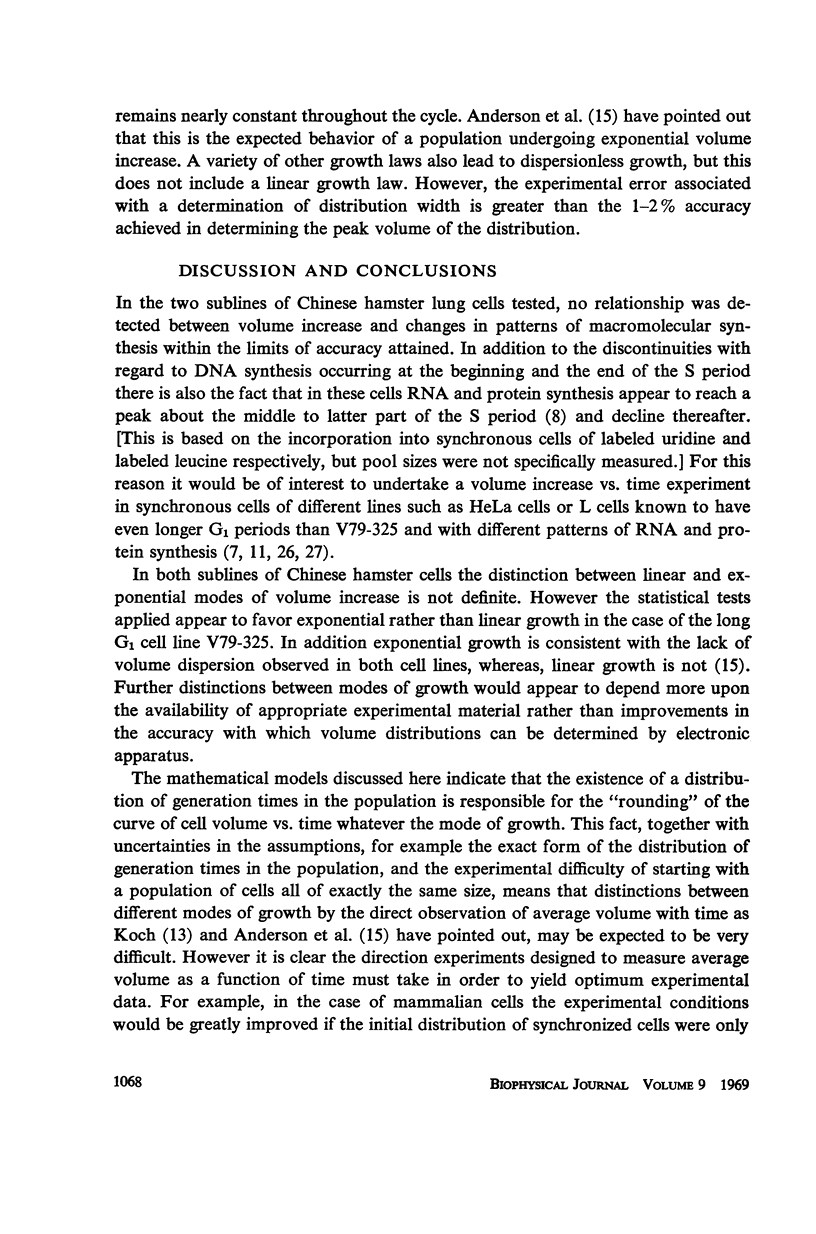
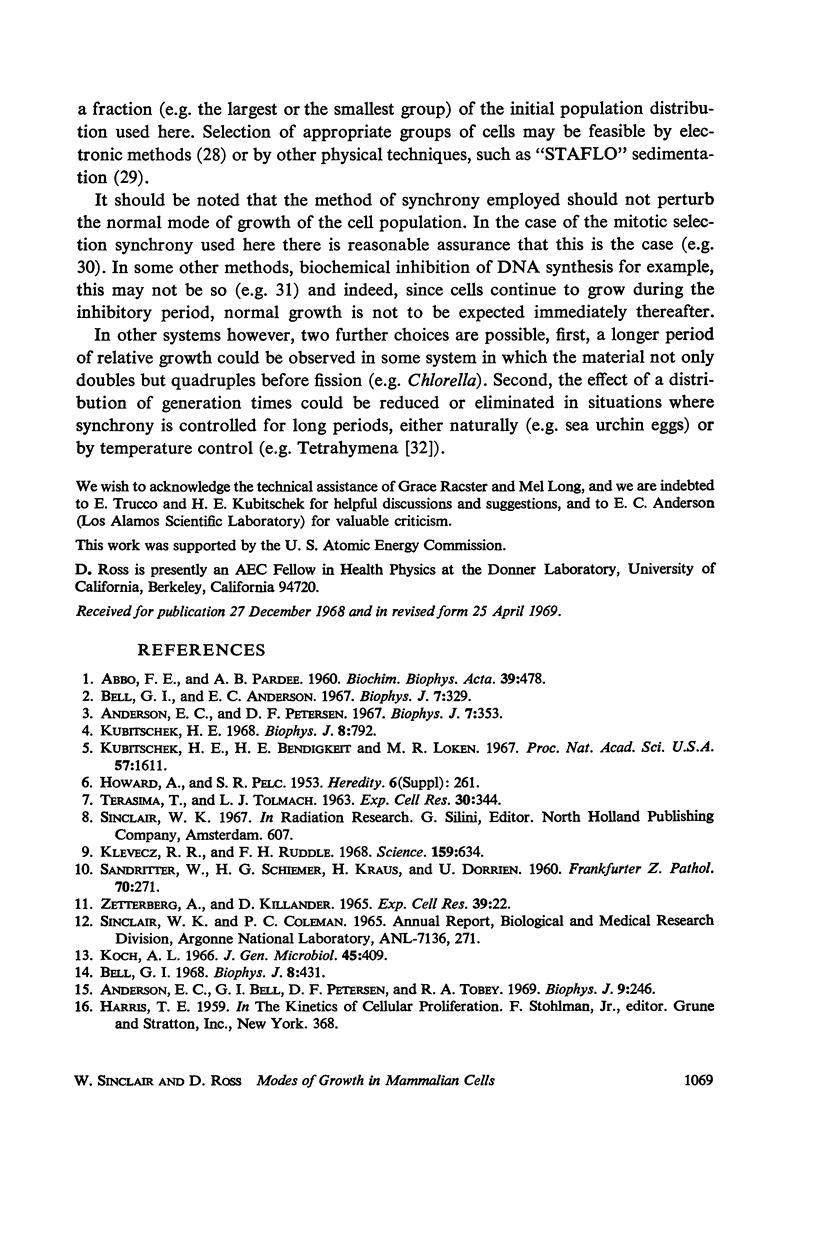
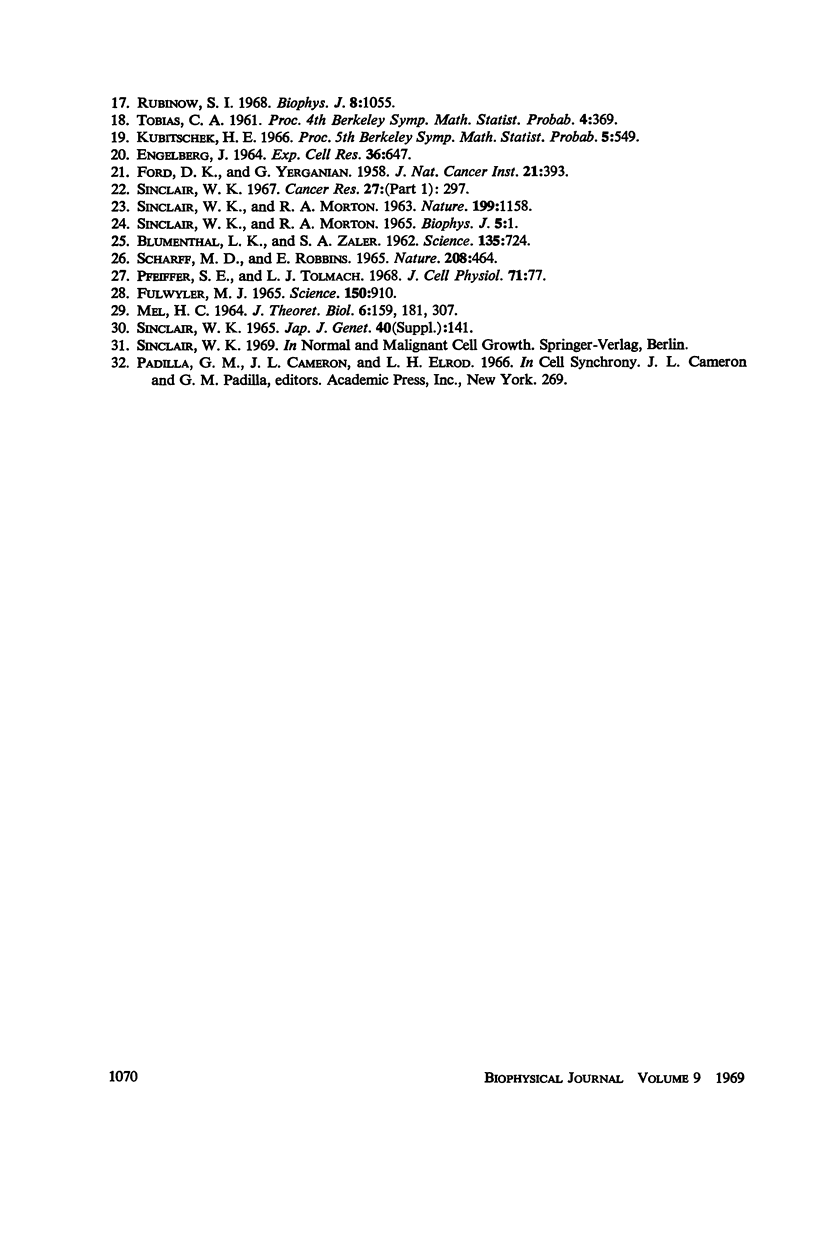
Selected References
These references are in PubMed. This may not be the complete list of references from this article.
- Anderson E. C., Bell G. I., Petersen D. F., Tobey R. A. Cell growth and division. IV. Determination of volume growth rate and division probability. Biophys J. 1969 Feb;9(2):246–263. doi: 10.1016/S0006-3495(69)86383-6. [DOI] [PMC free article] [PubMed] [Google Scholar]
- Anderson E. C., Petersen D. F. Cell growth and division. II. Experimental studies of cell volume distributions in mammalian suspension cultures. Biophys J. 1967 Jul;7(4):353–364. doi: 10.1016/S0006-3495(67)86593-7. [DOI] [PMC free article] [PubMed] [Google Scholar]
- BLUMENTHAL L. K., ZAHLER S. A. Index for measurement of synchronization of cell populations. Science. 1962 Mar 2;135(3505):724–724. doi: 10.1126/science.135.3505.724. [DOI] [PubMed] [Google Scholar]
- Bell G. I., Anderson E. C. Cell growth and division. I. A mathematical model with applications to cell volume distributions in mammalian suspension cultures. Biophys J. 1967 Jul;7(4):329–351. doi: 10.1016/S0006-3495(67)86592-5. [DOI] [PMC free article] [PubMed] [Google Scholar]
- Bell G. I. Cell growth and division. 3. Conditions for balanced exponential growth in a mathematical model. Biophys J. 1968 Apr;8(4):431–444. doi: 10.1016/s0006-3495(68)86498-7. [DOI] [PMC free article] [PubMed] [Google Scholar]
- ENGELBERG J. THE DECAY OF SYNCHRONIZATION OF CELL DIVISION. Exp Cell Res. 1964 Dec;36:647–662. doi: 10.1016/0014-4827(64)90320-9. [DOI] [PubMed] [Google Scholar]
- FORD D. K., YERGANIAN G. Observations on the chromosomes of Chinese hamster cells in tissue culture. J Natl Cancer Inst. 1958 Aug;21(2):393–425. [PubMed] [Google Scholar]
- Fulwyler M. J. Electronic separation of biological cells by volume. Science. 1965 Nov 12;150(3698):910–911. doi: 10.1126/science.150.3698.910. [DOI] [PubMed] [Google Scholar]
- Klevecz R. R., Ruddle F. H. Cyclic changes in enzyme activity in synchronized mammalian cell cultures. Science. 1968 Feb 9;159(3815):634–636. doi: 10.1126/science.159.3815.634. [DOI] [PubMed] [Google Scholar]
- Kubitschek H. E., Bendigkeit H. E., Loken M. R. Onset of DNA synthesis during the cell cycle in chemostat cultures. Proc Natl Acad Sci U S A. 1967 Jun;57(6):1611–1617. doi: 10.1073/pnas.57.6.1611. [DOI] [PMC free article] [PubMed] [Google Scholar]
- Rubinow S. I. A maturity-time representation for cell populations. Biophys J. 1968 Oct;8(10):1055–1073. doi: 10.1016/S0006-3495(68)86539-7. [DOI] [PMC free article] [PubMed] [Google Scholar]
- SANDRITTER W., SCHIEMER H. G., KRAUS H., DOERRIEN U. [Interference microscopic studies on the growth of individual cells (HeLa cells) in tissue culture]. Frankf Z Pathol. 1960;70:271–299. [PubMed] [Google Scholar]
- SINCLAIR W. K., MORTON R. A. VARIATIONS IN X-RAY RESPONSE DURING THE DIVISION CYCLE OF PARTIALLY SYNCHRONIZED CHINESE HAMSTER CELLS IN CULTURE. Nature. 1963 Sep 21;199:1158–1160. doi: 10.1038/1991158a0. [DOI] [PubMed] [Google Scholar]
- SINCLAIR W. K., MORTON R. A. X-RAY AND ULTRAVIOLET SENSITIVITY OF SYNCHRONIZED CHINESE HAMSTER CELLS AT VARIOUS STAGES OF THE CELL CYCLE. Biophys J. 1965 Jan;5:1–25. doi: 10.1016/s0006-3495(65)86700-5. [DOI] [PMC free article] [PubMed] [Google Scholar]
- Scharff M. D., Robbins E. Synthesis of ribosomal RNA in synchronized HeLa cells. Nature. 1965 Oct 30;208(5009):464–466. doi: 10.1038/208464a0. [DOI] [PubMed] [Google Scholar]
- TERASIMA T., TOLMACH L. J. Growth and nucleic acid synthesis in synchronously dividing populations of HeLa cells. Exp Cell Res. 1963 Apr;30:344–362. doi: 10.1016/0014-4827(63)90306-9. [DOI] [PubMed] [Google Scholar]
- Ubitschek H. E. Linear cell growth in Escherichia coli. Biophys J. 1968 Jul;8(7):792–804. doi: 10.1016/s0006-3495(68)86521-x. [DOI] [PMC free article] [PubMed] [Google Scholar]


